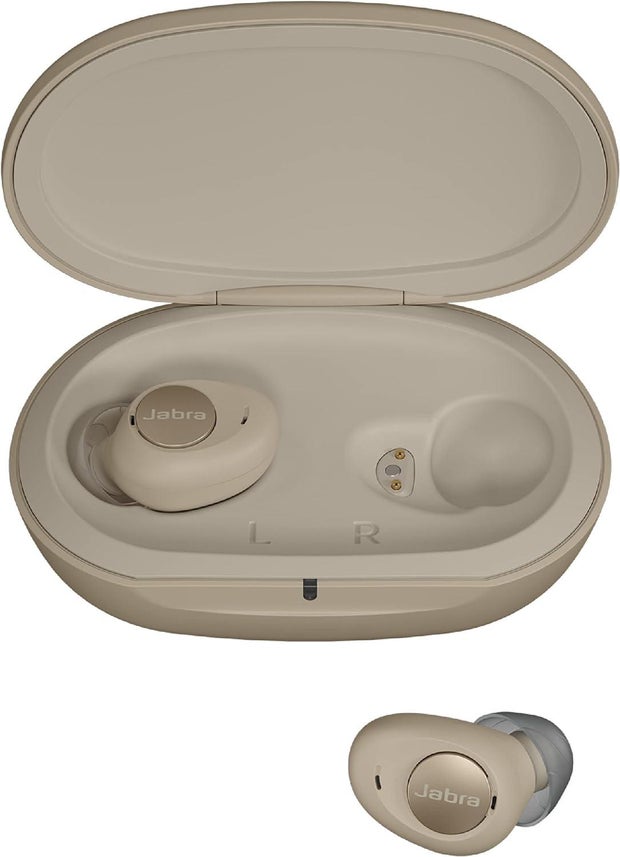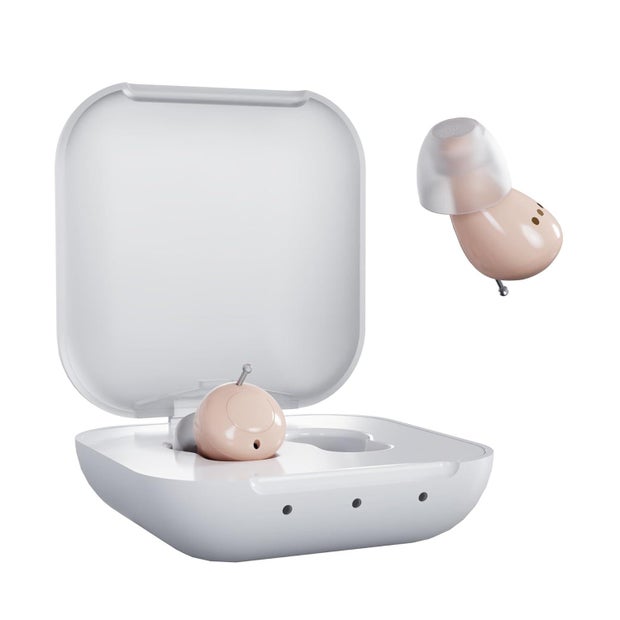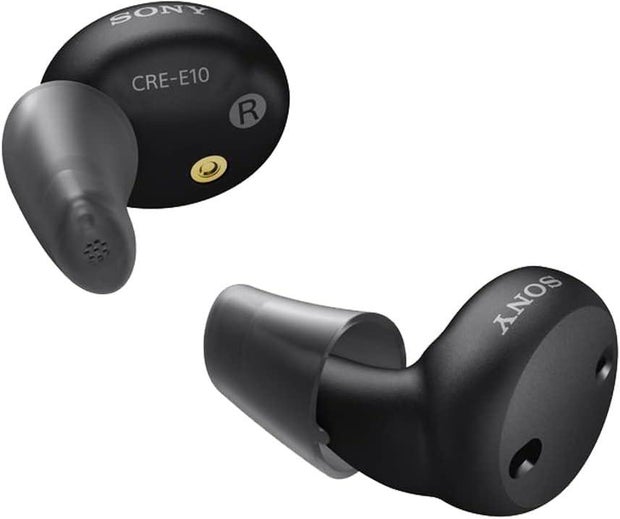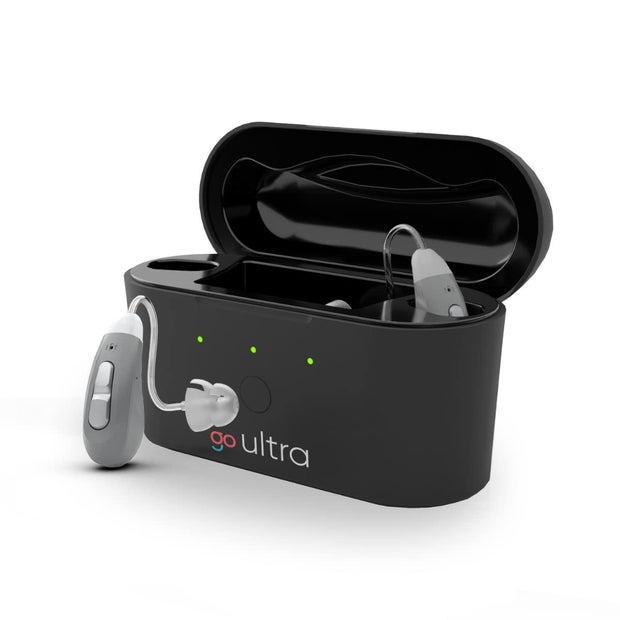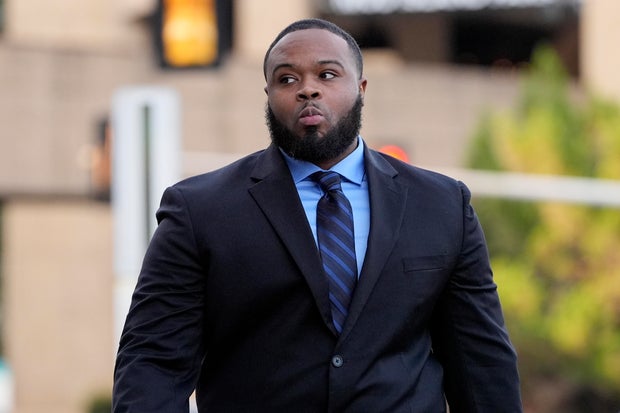CBS News
Best hearing aids for seniors in 2024

LightFieldStudios via Getty Images
Hearing loss can affect adults of any age, but it’s not uncommon for this condition to grow worse over time. Age-related hearing loss can be a problem for around one in three people over 65, and by the time you reach 75, that number jumps to roughly 50%. Don’t wait until the issue gets out of hand: schedule an appointment with your doctor to discuss whether hearing aids are right for you, then check out our top picks below for the best hearing aids for older adults.
You deserve a hearing aid that works for you, combating mild to profound hearing loss effectively while making life better thanks to rich audio features and easy instructions for everyday use. That means no medical devices with subpar sound amplification or poor usability.
Your doctor, as well as a trusted audiologist or hearing specialist will help you understand the extent of your hearing loss and settle on a hearing aid that can help. Check out the best hearing aids for seniors in 2024 below now to learn which brands and devices you may want to consider.
What is the best hearing aid for seniors?
Looking at both prescription and over-the-counter (OTC) hearing aids, we considered factors like a simple user-friendly design, good sound technology and affordability to find the absolute best hearing aids for older adults.
Prices listed for prescription hearing aids may differ from what you see when discussing hearing aids with your care team. That’s because different factors can affect costs such as charges for a professional fitting and programming services to get you all set up. Our prescription-grade hearing aid prices are calculated based on data from different healthcare providers and customer accounts.
Our top pick: Jabra Enhance Plus
Jabra
The first OTC hearing aid from Jabra, the Enhance Plus is a tiny device that could pass for a pair of wireless earbuds at first glance. This design offers a sleek, almost invisible look that won’t stand out.
The best features for this hearing aid include a long battery life (10-plus hours per charge), great speech amplification, and a lower price point than most prescription hearing aids.
Prices start at $799 for the Jabra Enhance Plus hearing aids.
Pros:
- Easy set-up and maintenance using the Jabra Enhance app.
- Great battery life.
- Nice balance of affordability and accessibility, making these our pick for best OTC hearing aids.
Cons:
- Jabra mobile app is currently only available for iOS.
- Sound quality and background noise cancellation features could be better.
Best for moderate to severe hearing loss: Phonak Audéo Lumity
Phonak
This hearing aid has several new and impressive features over previous Phonak hearing aids, such as improved tech that can focus on nearby voices: StereoZoom boosts front-facing conversations, while SpeechSensor makes it easier to hear voices from people to your side or even behind your back.
This hearing aid also offers Bluetooth connectivity for both iOS and Android devices and fitness-tracking features like step counts. If you’re interested in controlling your hearing aid from your phone, the mobile Phonak app makes everyday adjustments a breeze.
As a prescription hearing aid, the Phonak Lumity is available in four technology tiers, with more functionalities (and a higher price) tied to higher ones. These include L30 (essential), L50 (standard), L70 (advanced), and L90 (premium).
Prices start at around $1,800 for the lowest tier, the Lumity L30 hearing aid.
Pros:
- High-quality sound amplification from a trusted hearing aid brand.
- Multiple tech tiers can make it easy to find the right device for your needs (and your budget).
- Mobile app compatibility with iOS and Android devices.
Cons:
- MyPhonak app has conflicting reviews about user friendliness.
- Choosing the right tech tier can be overwhelming — consult with your audiologist to find the right fit for you.
Most affordable: Audien Hearing Atom 2
Audien Hearing
If you want quality hearing aids from the most budget-friendly hearing aid brand, look no further than the Atom 2 hearing aids by Audien Hearing.
This small and discreet hearing aid can be just as useful for people with severe hearing loss as they are for those with mild to moderate hearing loss. The Atom 2 by Audien Hearing also offers solid background noise cancellation.
Don’t just take our word for it — according to Audien Hearing, this hearing aid currently holds a 4.5 out of five star rating with more than 500,000 customer reviews.
These budget-friendly hearing aids are available for just $189 at Audien Hearing below.
Pros:
- The absolute lowest price you’re going to find for high quality OTC hearing aids from a trusted and budget-friendly hearing aid brand.
- Multiple preset programs can make these a great pick for people with varying degrees of hearing loss, as well as anyone with the inner ear disorder Ménière disease, which can require multiple adjustments throughout the day.
- 24-hour battery life on a single charge.
Cons:
- Small size and sleek design can make these difficult to maneuver or configure for older adults.
- Sound amplification and background cancellation features aren’t as crisp or robust as other, pricier models.
Best sound quality: Sony CRE-E10
Sony
Whether you’re trying to listen to music, focus on a nearby conversation or simply relax along with the ambient sounds of everyday life, crisp sound quality is important. This hearing aid offers that and more, such as speech enhancement and feedback reduction at a quality to rival many prescription hearing aids.
If you want a premium hearing aid that you can fit yourself with perks like Bluetooth connectivity and an exceptional battery life, this is the hearing aid for you.
One caveat: You will have to deal with a price tag closer to prescription hearing aids versus your average OTC device, as the CRE-E10 is normally available for $1,299.
Pros:
- Exceptional sound quality for OTC hearing aids.
- With a battery life clocking in at more than 25 hours per charge according to Sony, these hearing aids are the longest-lasting devices on this list.
Cons:
- Higher price than most OTC hearing aids.
- Although there are automatic adjustments that kick in based on your environment, there are no touch controls or physical buttons — all adjustments can be made via a mobile app, which can take some getting used to.
Best for hands-free phone calls and wireless streaming: Go Hearing ultra
Go Hearing
This behind-the-ear OTC hearing aid comes with several standout features, such as Bluetooth streaming capability, hands-free calls, and a whopping 20-hour battery life, that make it a great tool for older adults tired of having to manually handle their hearing aid every so often.
Thanks to its flexibility and included measuring tool, this hearing aid is easily fitted and configured on your own — no visits to an audiologist or specialist required if you’d prefer to get situated from the comfort of home.
Pros:
- Comfortable and lightweight, especially for behind-the-ear hearing aids, which can sometimes be on the bulkier side.
- Impressive battery life for OTC hearing aids.
Cons:
- Sound performance isn’t as impressive as other hearing aids.
- No mobile app, so adjustments are limited to the device’s buttons.
What are the different hearing aid styles?
The sheer variety of hearing aid styles and models can be overwhelming for people of any age, let alone seniors hoping for a quick and easy recommendation from their doctor.
There are smaller devices that make for a less noticeable look, while slightly bulkier hearing aids have parts that sit comfortably behind and around the ear. Go to your next audiologist appointment prepared by knowing the most common styles you might come across, including:
- Behind-the-ear (BTE): BTE hearing aids loop over the top of the ear, with most of the electronics in a plastic case behind it. With the largest design, these provide optimal sound amplification over other models.
- Receiver-in-the-canal (RIC): RIC hearing aids (as well as the smaller receiver-in-the-ear, or RITE, devices) are similar to a BTE in design, but with a connecting wire in place of the BTE’s earmold. This gives the ear canal more room and results in a more comfortable fit.
- In-the-ear (ITE): ITE hearing aids are custom-made to sit entirely in the outer ear. These devices have a longer battery life and usually come with more features, such as volume control, than smaller models.
- Completely-in-the-canal (CIC): CIC hearing aids have the smallest design, with a custom-built shell that fits in the ear canal. These are the least noticeable, but don’t offer many features or the most powerful sound amplification.
- Open fit: A variation of a BTE, an open-fit hearing aid has an over-the-ear design with an open dome in the canal instead of a tube or mold. This keeps the ear canal open for natural sound to enter the ear as well – ideal for mild to moderate hearing loss.
How much do hearing aids cost?
When it comes to hearing aid prices, there are two groups to consider: prescription hearing aids and over-the-counter, or OTC hearing aids.
One 2018 survey of over 2,000 adults found that the average price for high quality prescription hearing aids cost around $4,600 — with the caveat that prices range widely for a number of reasons and can be anywhere from $1,000 to more than $8,000 per pair.
OTC hearing aids are a relatively new category where customers can get their hands on decent devices for much lower costs — less than $1,000 a pair. These typically come with less robust tech features (making them ideal for people with mild to moderate hearing loss) and none of the complex extras that you get with a prescription hearing aid.
Can hearing aids help with tinnitus?
Tinnitus is an auditory issue where one perceives persistent or intermittent sounds (such as a ringing, roaring or buzzing) that don’t have a real outside source. While they don’t cure or reduce the severity of tinnitus, hearing aids are considered by experts like those at the National Council on Aging (NCOA) to be a leading treatment option for relief from tinnitus.
The best hearing aids for tinnitus can help you manage frustrating or distracting symptoms, thanks to features like customizable hearing programs and advanced sound-processing capabilities. Some quality hearing aids can effectively mask the persistent sounds that come with tinnitus, distracting users from the most persistent symptoms of tinnitus.
Some prescription-grade hearing aids let users fine-tune sound settings on the fly, which is ideal for dealing with tinnitus symptoms that come and go or change in severity over time.
How we chose the best senior-friendly hearing aids of 2024
For a closer look at how we rate products, here is what we prioritized while putting together our list of the best hearing aids you can buy today:
- Usability: Hearing aids for seniors should be easy to put in and take out. Cleaning and making daily adjustments should be easy, as well. We stuck with senior-friendly hearing aids that meet these requirements.
- Comfortability: We paid attention to the design, shape, and fit of each hearing aid to ensure only the most comfortable hearing aids made the list.
- Affordability: We looked at both prescription hearing aids and the more budget-friendly OTC devices to make sure we highlight high quality hearing aids of all price points.
- Customer reviews: All of our hearing devices hold a four-star review or higher from happy customers just like you.
CBS News
After Tyre Nichols’ fatal beating, Memphis officer texted photo of bloodied man to ex-girlfriend, she testifies

A former Memphis police officer charged in the fatal beating of Tyre Nichols sent his ex-girlfriend a photo of the badly injured man on the night he was punched, kicked and hit with a police baton following a traffic stop, according to trial testimony Wednesday.
Brittany Leake, a Memphis officer and Demetrius Haley’s former girlfriend, testified during the criminal trial that she was on the phone with Haley when officers pulled Nichols over for a traffic stop. She said she heard a “commotion,” including verbal orders for someone to give officers his hands.
The call ended, but Haley later texted the photo in a group chat comprising Haley, Leake and her godsister, she testified. Prosecutors displayed the photo for the jury. It showed Nichols with his eyes closed, on the ground with what appeared to be blood near his mouth and his hands behind his back.
Leake said that when she saw the photo, her reaction was: “Oh my God, he definitely needs to go to the Med.”
The Med is shorthand for Memphis’ trauma hospital.
The fatal beating, caught on police bodycams and street surveillance cameras, has sparked protests and calls for police reform. Officers said they pulled over Nichols for reckless driving, but Memphis’ police chief said there was no evidence to substantiate that claim.
Haley, Tadarrius Bean and Justin Smith are on trial after pleading not guilty to charges that they deprived Nichols of his civil rights through excessive force and failure to intervene, and obstructed justice through witness tampering. Their trial began Sept. 9 and is expected to run three to four weeks.
George Walker IV / AP
The Memphis Police Department fired the three men, along with Emmitt Martin III and Desmond Mills Jr., after Nichols’ death. The beating was caught on police video, which was released publicly. The officers were later indicted on the federal charges. Martin and Mills have taken plea deals.
During her testimony Wednesday, Leake said she deleted the photo after she saw it and that sending such a photo is against police policy.
“I wasn’t offended, but it was difficult to look at,” she said.
Leake said Haley had sent her photos before of drugs, and of a person who had been injured in a car accident.
Earlier Wednesday, Martin was on the witness stand for a third day. Defense attorneys tried to show inconsistencies between Martin’s statements to investigators and his court testimony. Martin acknowledged lying about what happened to Memphis Police Department internal investigators, to try to cover up and “justify what I did.”
But Martin said he told the truth to FBI investigators after he pleaded guilty in August, including statements about feeling pressure on his duty belt where his gun was located during the traffic stop, but not being able to see if Nichols was trying to get his gun. Martin has testified that he said “let go of my gun” during the traffic stop.
Martin Zummach, the attorney for Justin Smith, asked Martin if he knew of any reasons why Nichols did not simply say, “I give up.”
“He’s out of it,” Martin said. “Disoriented.”
Martin testified that the situation escalated quickly when Haley pulled his gun and violently yanked Nichols from his car, using expletives and failing to tell Nichols why he had been pulled over and removed from the vehicle.
“He never got a chance to comply,” Martin said.
Nichols, who was Black, was pepper sprayed and hit with a stun gun during the traffic stop, but ran away, police video shows. The five officers, who also are Black, then beat him about a block from his home, as he called out for his mother.
Video shows the officers milling about and talking as Nichols struggled with his injuries. Nichols died Jan. 10, 2023, three days after the beating.
An autopsy report shows Nichols – the father of a boy who is now 7 – died from blows to the head. The report describes brain injuries, and cuts and bruises on his head and elsewhere on his body.
Jesse Guy testified that he was working as a paramedic for the Memphis Fire Department the night of the beating. He arrived at the location after two emergency medical technicians, Robert Long and JaMichael Sandridge.
Guy said he was not told about the medical problems Nichols had experienced before he arrived, and that Nichols was injured, seated on the ground and unresponsive.
Nichols had no pulse and was not breathing, and it “felt like he was lifeless,” Guy said.
In the ambulance, Guy performed CPR and provided mechanical ventilation, and Nichols had a pulse by the time he arrived at the hospital, the paramedic said.
Guy said Long and Sandridge did not say if they had checked Nichols’ pulse and heart rate, and they did not report if they had given him oxygen. When asked by one of Bean’s lawyers whether that information would have been helpful in treating Nichols, Guy said yes.
Long and Sandridge were fired for violating fire department policies after Nichols died. They have not been criminally charged.
The five officers also have been charged with second-degree murder in state court, where they pleaded not guilty. Mills and Martin are expected to change their pleas.
Federal prosecutors have previously recommended a 40-year sentence for Martin. A date has not been set in state court yet.
Nichols worked for FedEx, and he enjoyed skateboarding and photography. The city of Sacramento, where Nichols grew up, named a skatepark in his honor. “Tyre fell in love with skateboarding at a young age and it wasn’t long before it became a part of his lifestyle,” states the resolution approved by the city council. He had a tattoo of his mother’s name.
“Tyre Nichols’ family have been praying for justice and accountability from the very beginning of this tragedy,” Ben Crump and Antonio Romanucci, the civil rights attorneys representing Nichols’ family, said in a statement when the trial began.
CBS News
Boeing set to start large-scale furloughs due to machinists strike

Boeing’s CEO said Wednesday that the company will begin furloughing “a large number” of employees to conserve cash during the strike by union machinists that began last week.
Chief Executive Kelly Ortberg said the people who would be required to take time off without pay starting in coming days include executives, managers and other employees based in the U.S.
“While this is a tough decision that impacts everybody, it is in an effort to preserve our long-term future and help us navigate through this very difficult time,” Ortberg said in a company-wide message to staff.
Boeing didn’t say how many people will face rolling furloughs, but the number is expected to run into the tens of thousands. The aerospace giant had 171,000 employees at the start of the year.
About 33,000 Boeing factory workers in the Pacific Northwest began a strike Friday after rejecting a proposal to raise pay by 25% over four years. They want raises of at least 40%, the return of a traditional pension plan and other improvements in the contract offer they voted down.
Scott Brauer / Bloomberg via Getty Images
The strike is halting production of several airplane models including Boeing’s best-selling plane, the 737 Max. The company gets more than half of the purchase price when new planes are delivered to buyers, so the strike will quickly hurt Boeing’s cash flow.
Ortberg said selected employees will be furloughed for one week every four weeks while retaining their benefits. The CEO and other senior executives will take pay cuts during the duration of the strike, he said, without stating how deep the cuts will be.
All work related to safety, quality, customer support and certification of new planes will continue during the furloughs, he said, including production of 787 Dreamliner jets, which are built by nonunion workers in South Carolina.
Ortberg said in a memo to employees that the company is talking to the International Association of Machinists and Aerospace Workers about a new contract agreement that could be ratified.
“However, with production paused across many key programs in the Pacific Northwest, our business faces substantial challenges and it is important that we take difficult steps to preserve cash and ensure that Boeing is able to successfully recover,” he said.
Boeing’s chief financial officer warned employees earlier this week that temporary layoffs were possible.
The company, which is based in Arlington, Virginia, but has most of its commercial-airplanes business located in the Pacific Northwest, is also cutting spending on suppliers, freezing hiring and eliminating most travel.
Despite two full days of talks assisted by the Federal Mediation and Conciliation Service, the union said Wednesday that no resolution had been reached and no additional negotiations were scheduled, according to CBS Seattle affiliate KIRO-TV.
Striking workers are picketing at several locations in the Seattle area, Oregon and California. The union, which recommended the offer that members later rejected by a 96% vote, is surveying the workers to learn what they want in a new contract. The union’s last strike at Boeing, in 2008, lasted about two months.
If the walkout doesn’t end soon, Boeing’s credit rating could be downgraded to non-investment or junk status, which would make borrowing more expensive. Shortly after the walkout began Friday, Moody’s put Boeing on review for a possible downgrade, and Fitch said a strike longer than two weeks would make a downgrade more likely.
CBS News
A Moment With: Viswa Colluru

Watch CBS News
Be the first to know
Get browser notifications for breaking news, live events, and exclusive reporting.



